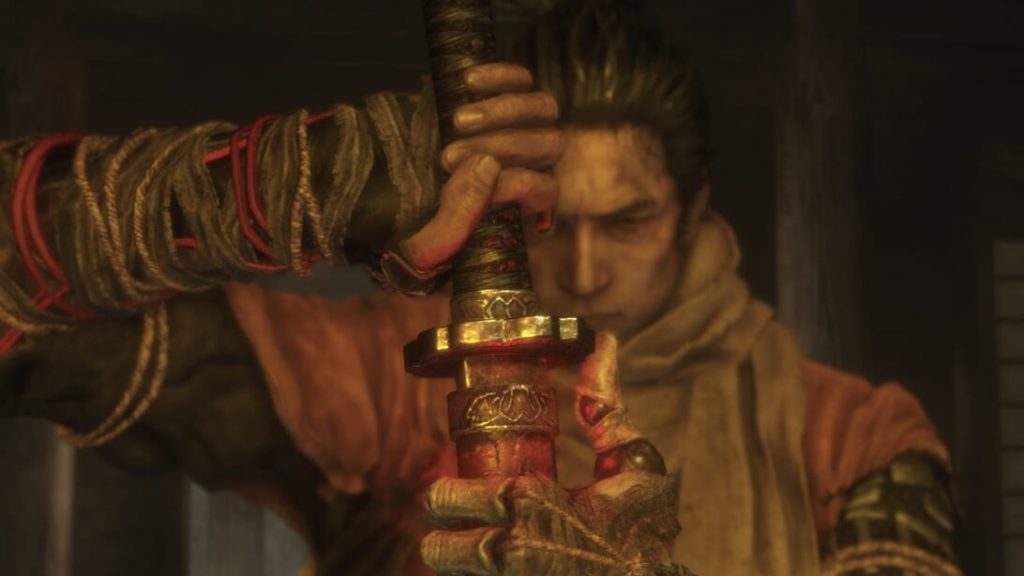The last generation of consoles saw FromSoftware become a well-known name throughout the gaming world. First established more than 20 years ago, the studio has become known for its high-quality games in recent times. Sekiro: Shadows Die Twice is the latest in a long line of successful titles that stretches back to 2009’s Demon’s Souls. Obviously, the fact that the developer was working on such a different looking game caused a great deal of interest. But does Sekiro: Shadows Die Twice hold up when compared to FromSoftware’s previous work?

Story
Unlike the majority of FromSoftware’s recent games, Sekiro: Shadows Die Twice has a proper story. While the likes of Dark Souls did have a plot, at least in principle, it was never a crucial element. Instead, those games put the focus on exploration and world-building. These are still factors in the new game but a proper story is now in place.
Set in the Sengoku period of Japan, the plot centers on a shinobi known as Wolf. Defeated by a powerful foe, who also cut off his arm, he suffers from amnesia but can revive himself. This is the result of his Dragon Heritage, which flows in his blood. Much of the narrative is spent trying to protect this mystical force.
You no longer have to go out in search of any backstory. Sekiro: Shadows Die Twice wants the story to be front and center. Interesting characters are around every corner and you even have the ability to experience different endings through the choices you make. Full cutscenes are also included, bringing some emotion and depth to the interactions between the characters.
Ultimately, it makes sense to include such a deep story in a more familiar world. The Dark Souls games are alien and full of wondrous monstrosities. Players were content to explore these strange fantasy environments. However, with a more historical setting and human characters, players need more context and backstory as motivation.
Gameplay

As previously mentioned, Wolf can revive himself when killed. This is perhaps the central gameplay element that ties Sekiro: Shadows Die Twice with FromSoftware’s previous games. Gone are bonfires and Estus Flasks. But in their place are very similar systems. Even the revival mechanic borrows from these titles. Resurrecting Wolf means sucking the life essence from those around you. NPCs begin to suffer from an affliction known as Dragonrot.
This has a detrimental effect on several things, such as your ability to complete quests and keep hold of your money upon death. It is possible to cure Dragonrot but only in a limited way. You have to carefully manage when to lift the ailment and ensure you don’t needlessly die to waste the effort needed to do it. It adds an element of resource management to the entire experience that provides extra tension.
On the other hand, the biggest change to Sekiro: Shadows Die Twice when compared to its predecessors is the combat. Swordplay is now faster paced with an emphasis on attack rather than defense. You can no longer rely on blocking and dodging out the way of enemy attacks. Instead, you are forced to constantly press forward. Boss battles, in particular, need a relentless emphasis on pushing forward, not allowing your opponent to recover.
Another departure from the traditional gameplay seen in FromSoftware’s games is a grappling hook. This gives you the chance to sneakily move around, getting past enemies without alerting them. The item also affords the developers the chance to add some verticality to their level design. Multiple branching paths are now available, giving you the freedom to choose where to go and who to fight. It is a very welcome addition that really adds a lot to the overall gameplay.
Presentation

The Dark Souls games have never been known for displaying the best graphics. Yet, they have always had a distinctive style. Sekiro: Shadows Die Twice carries on this tradition, with an appealing design heavily inspired by its setting. Of course, everything runs very smoothly, with character animations looking superb.
The audio design is also a delight. Keeping your ears open is essential in this title but you will never regret doing so. Great music and voice acting make playing through the game a joy. Meanwhile, sound effects provide constant hints and cues for what to do, especially in battles with bosses.
An occasional problem, and the only real gripe, is that the camera can sometimes get lost during combat. The lock-on feature will fail to find the correct target or drop off entirely, leaving you to frantically try and reorient yourself.
Final Verdict
As always, FromSoftware manages to carefully balance the notorious difficulty with a sense of fairness. Dying is almost always a result of you making a mistake. Whether this was a missed parry or simply losing focus, you cannot blame the game. The fault lies with the player and in that sense, Sekiro: Shadows Die Twice never becomes too frustrating. The addition of a proper story, stealth gameplay, and an attack-minded combat style makes this feel like a completely new type of game. It feels fresh and exciting while retaining that underlying Dark Souls formula.




